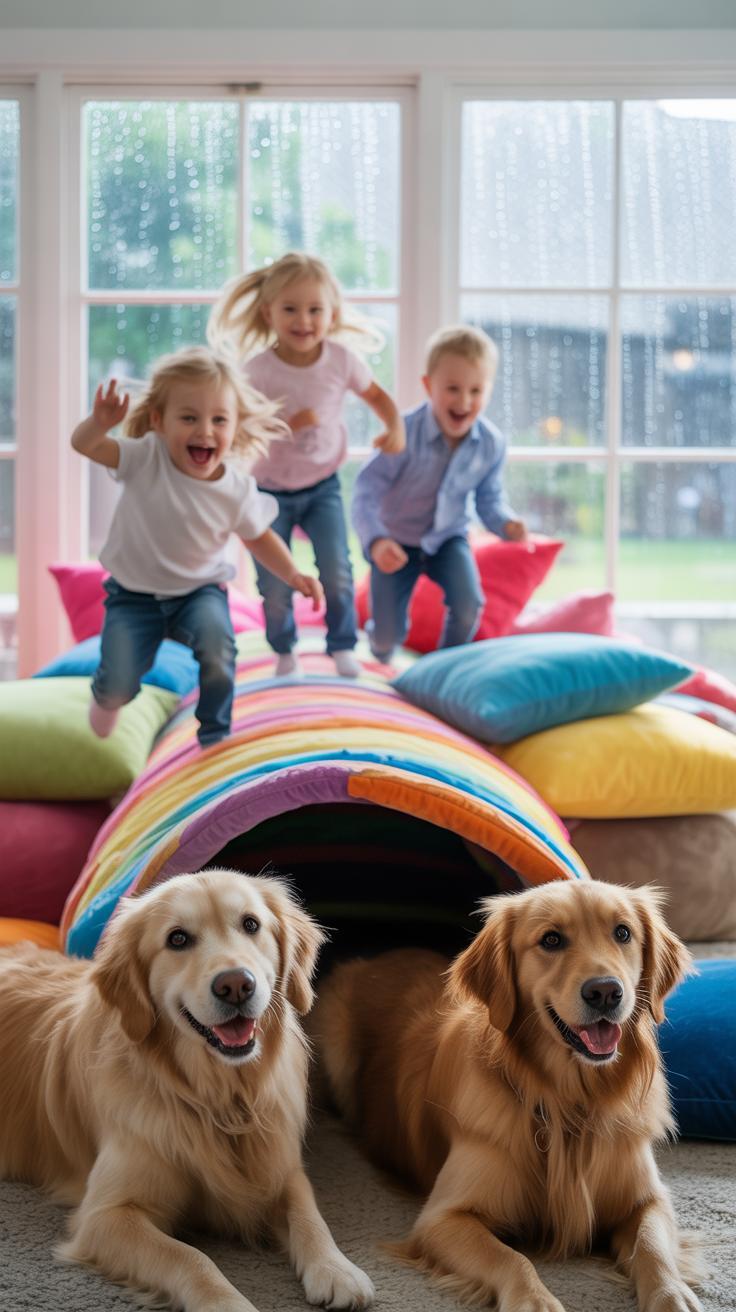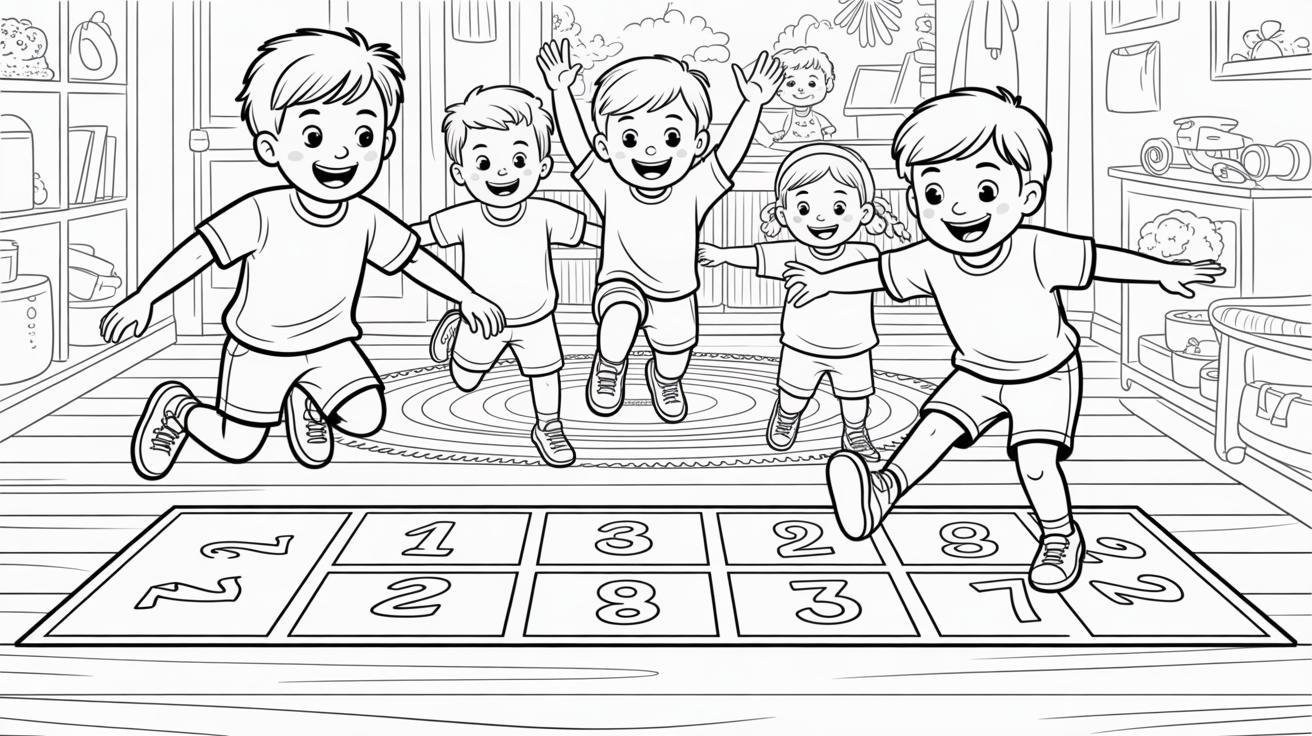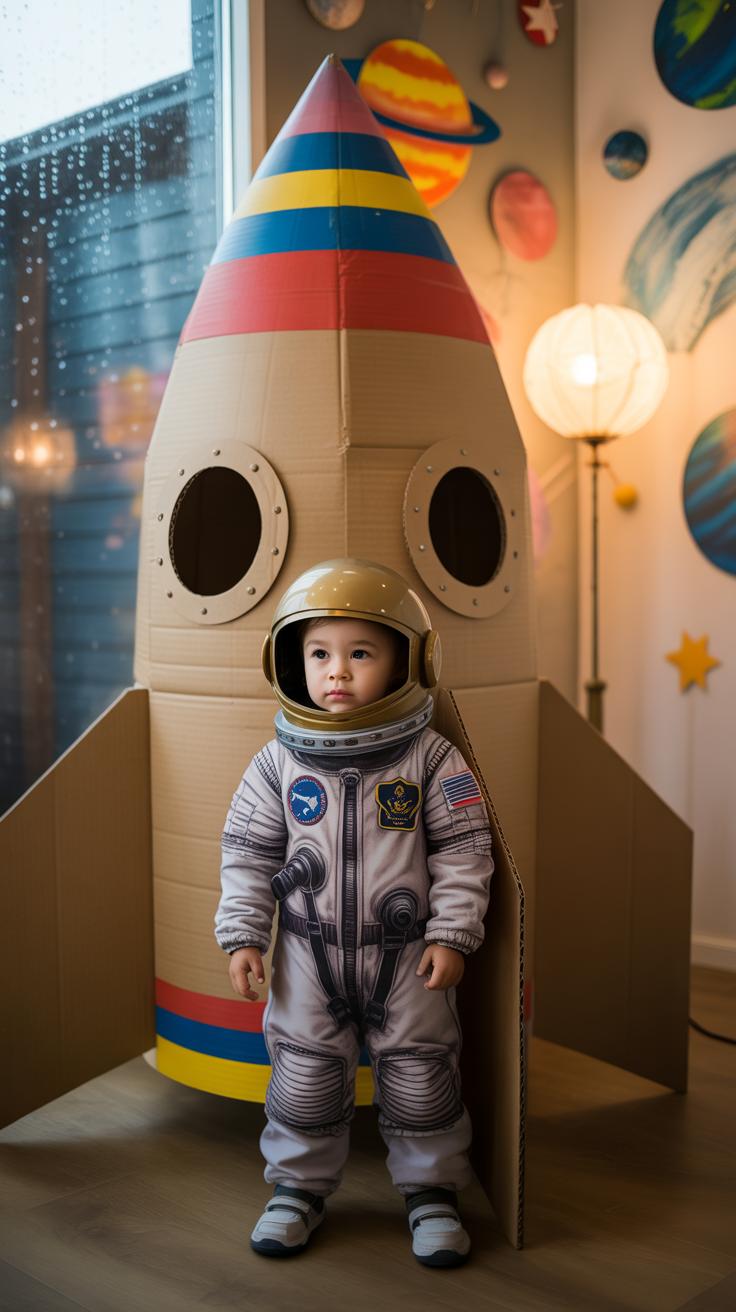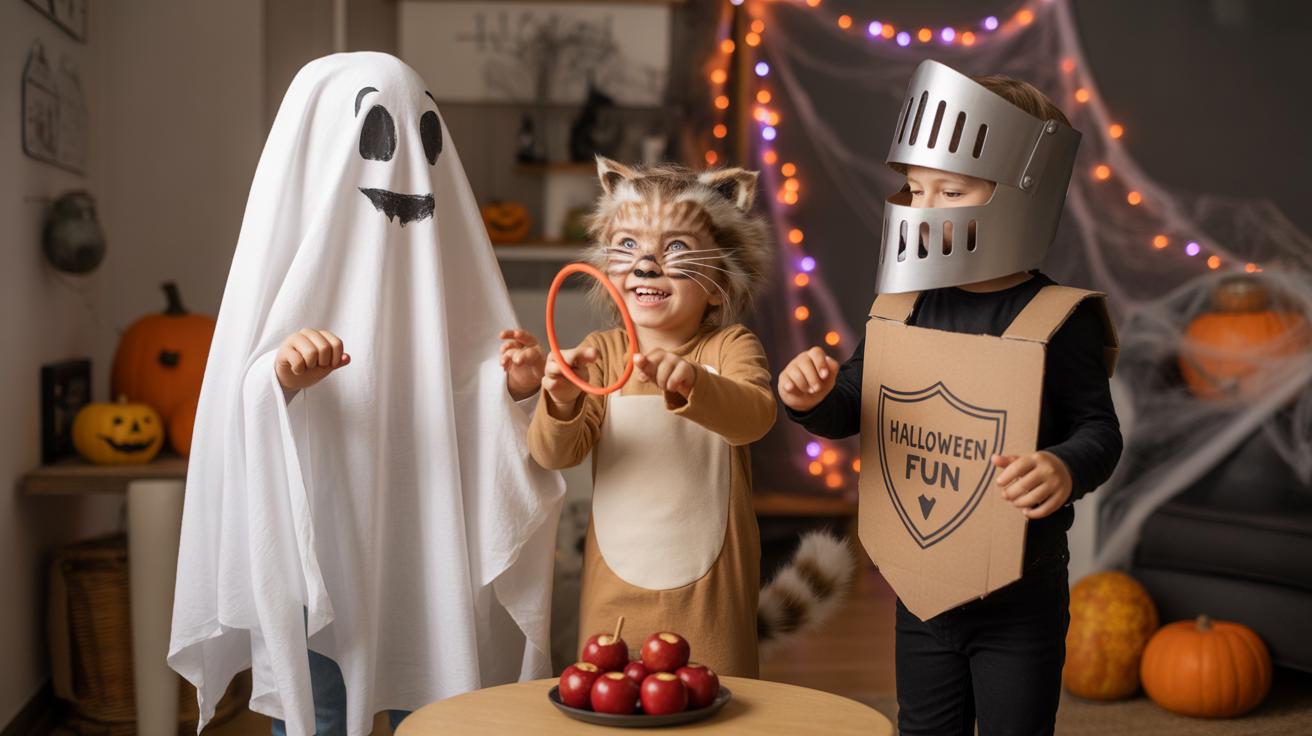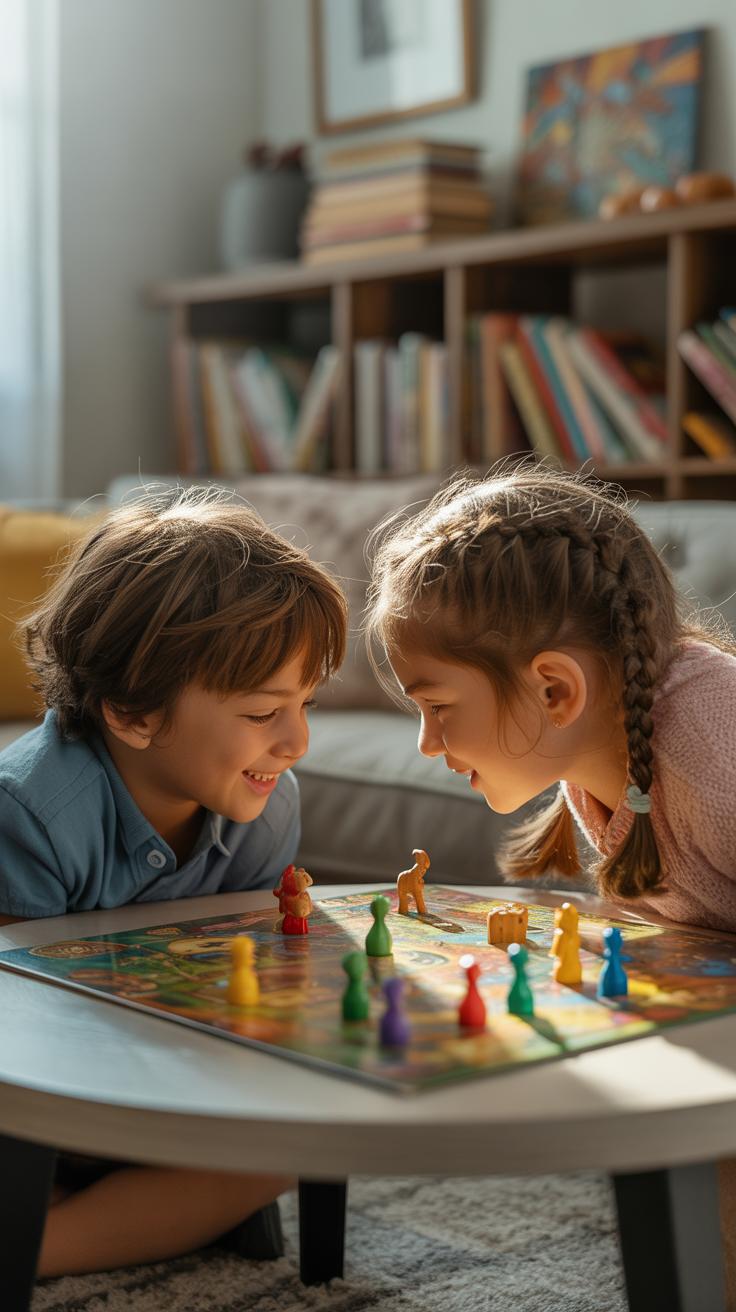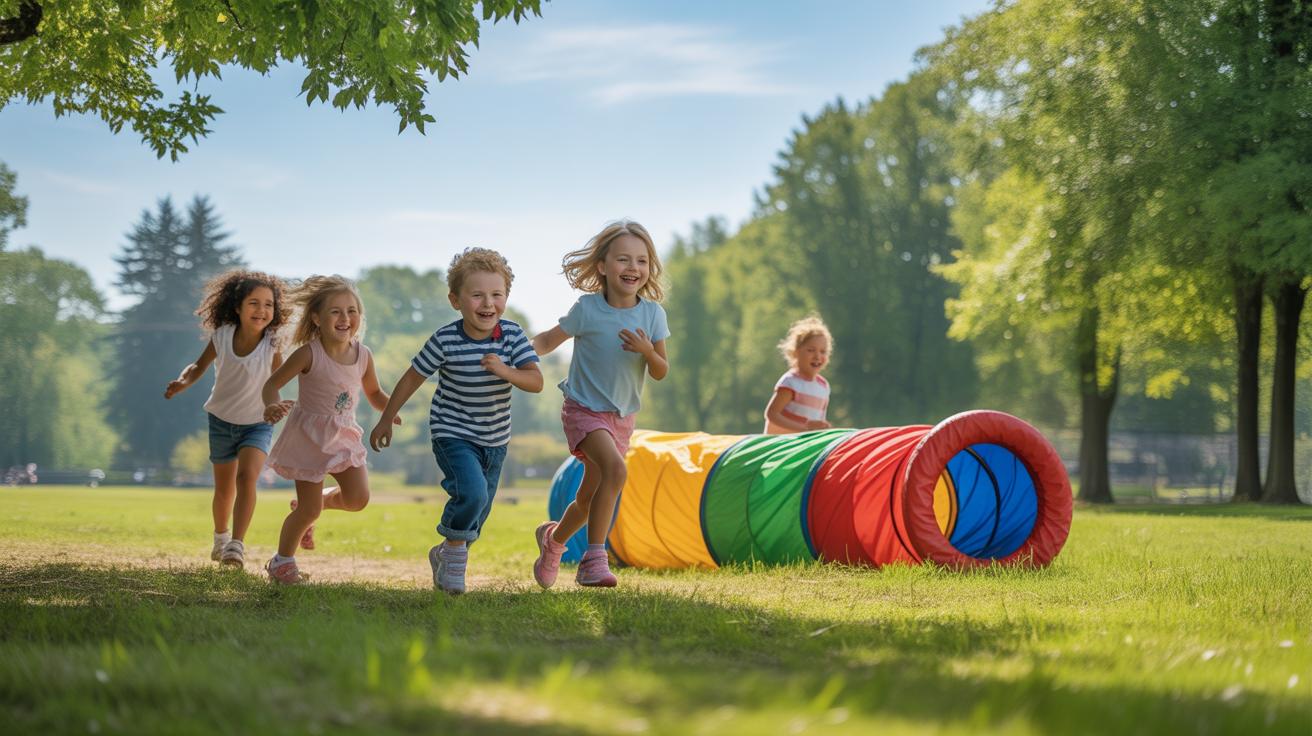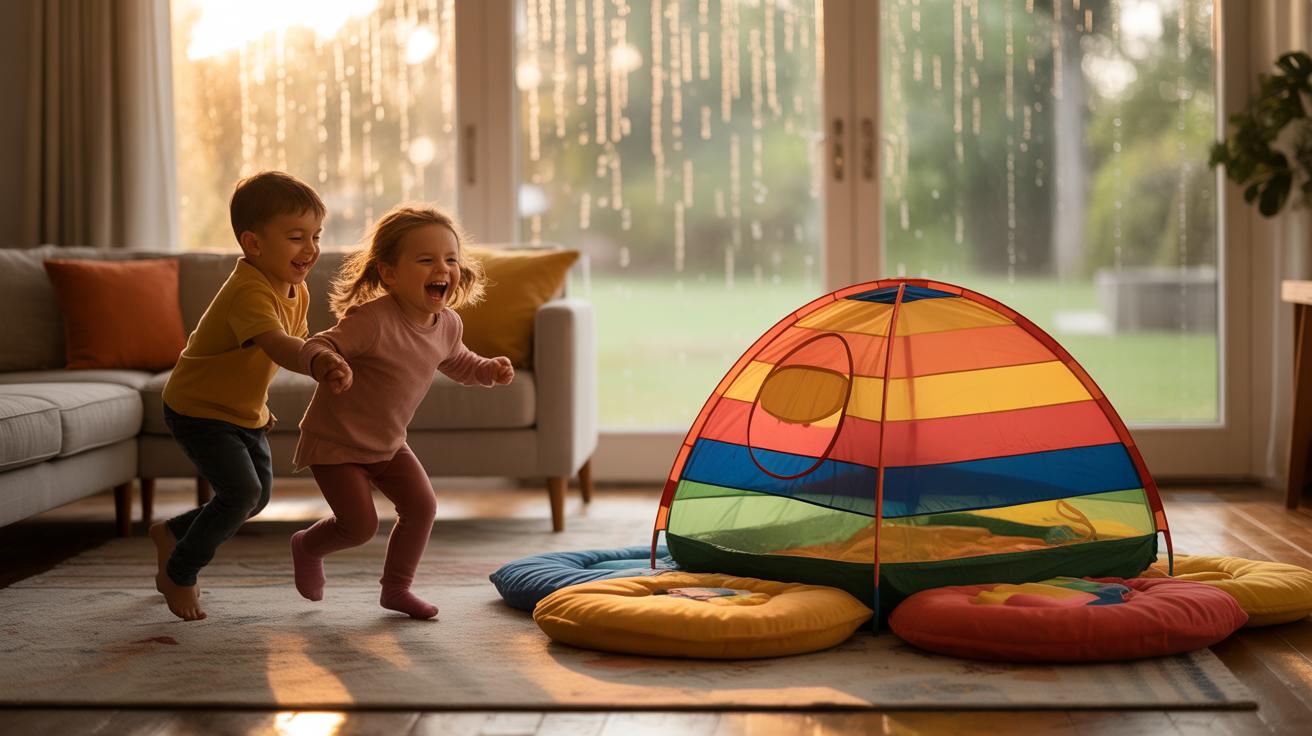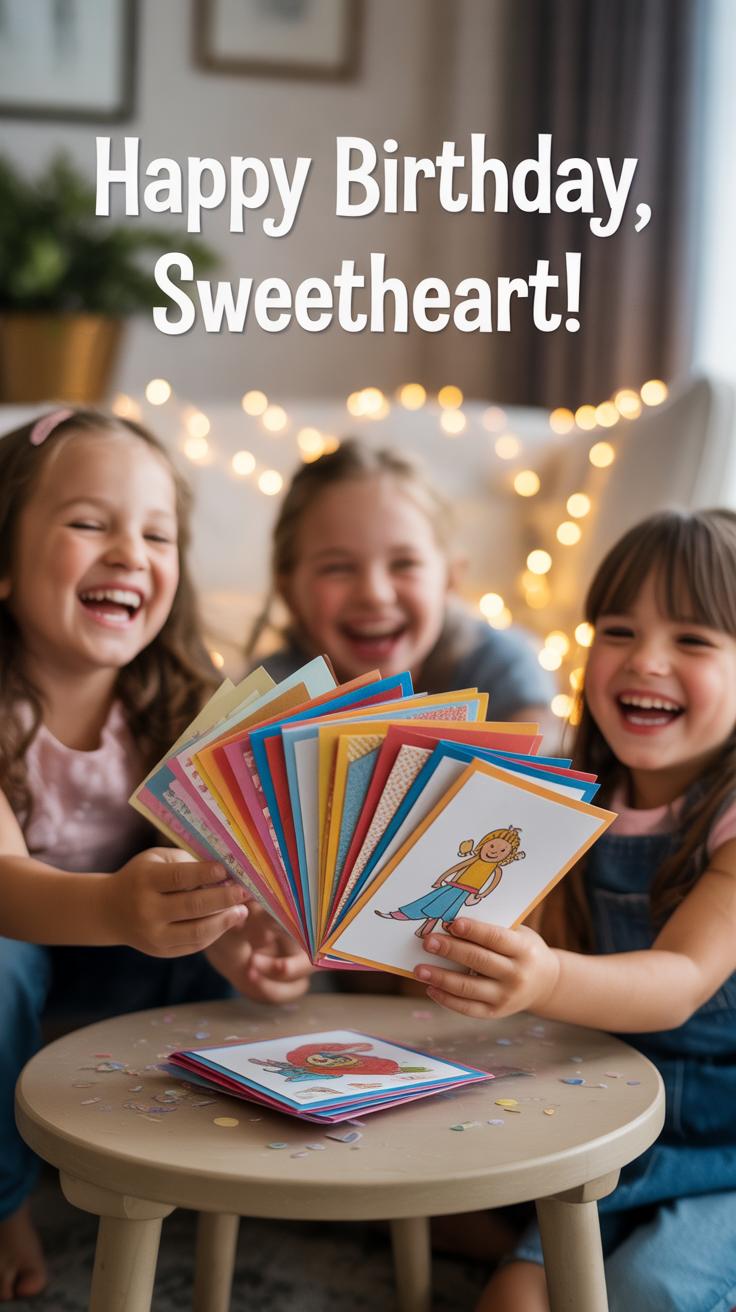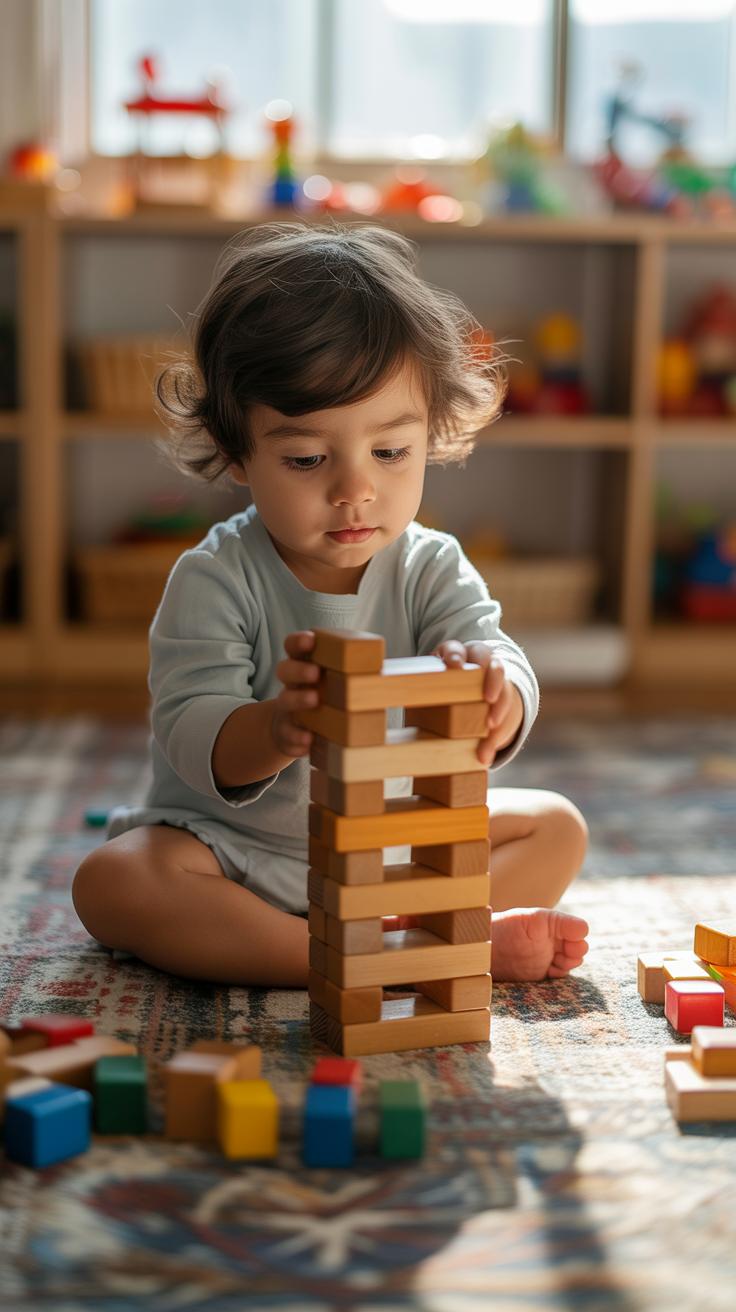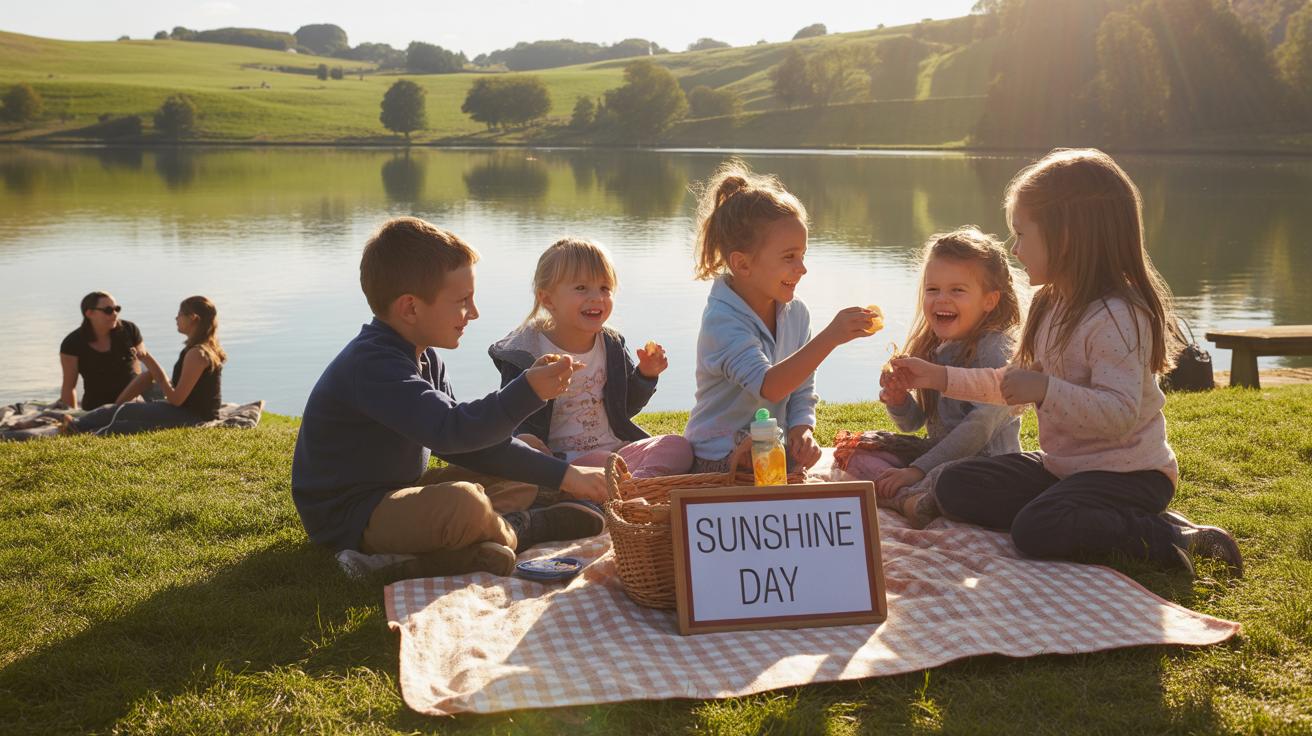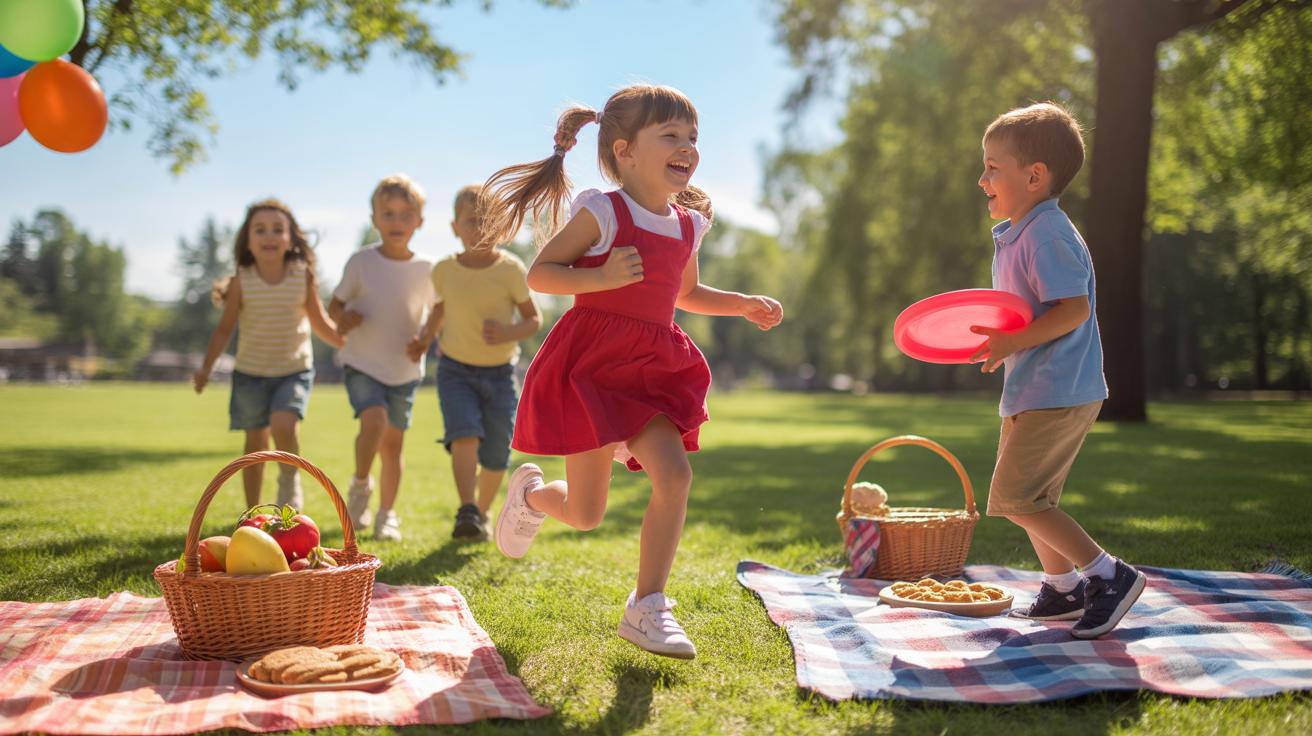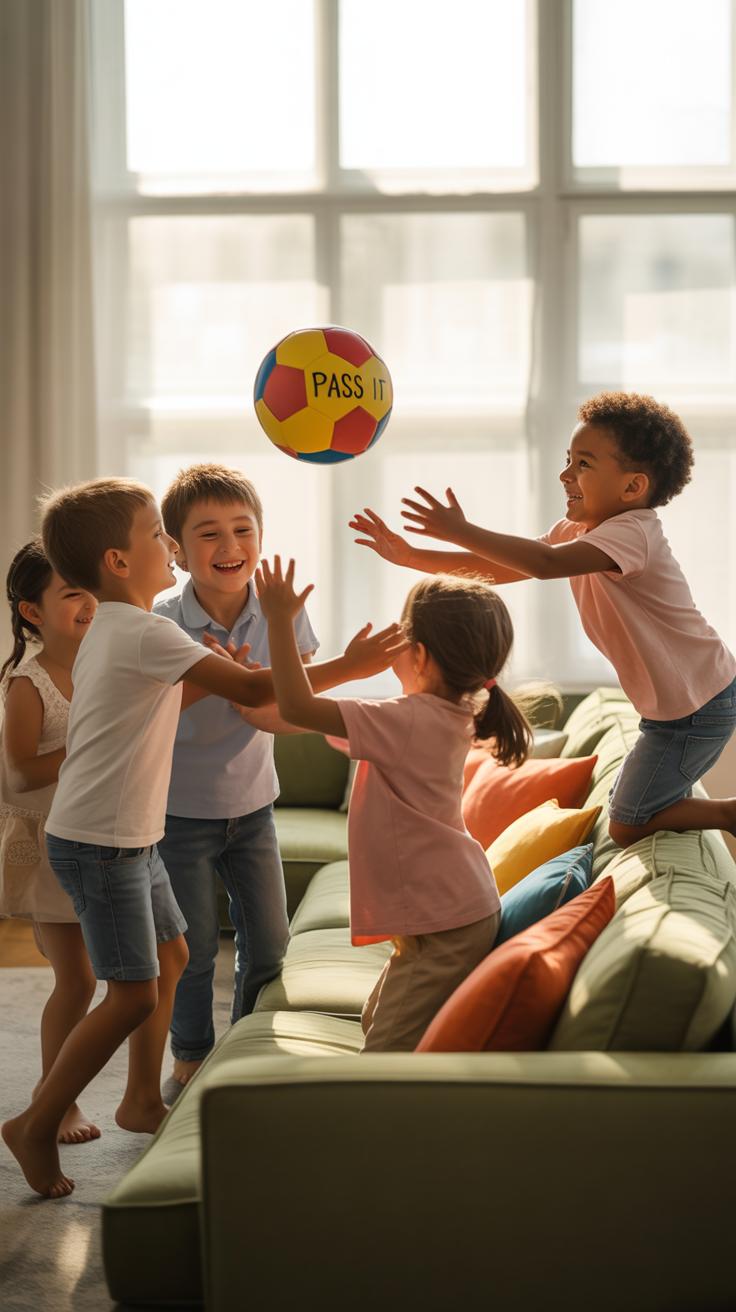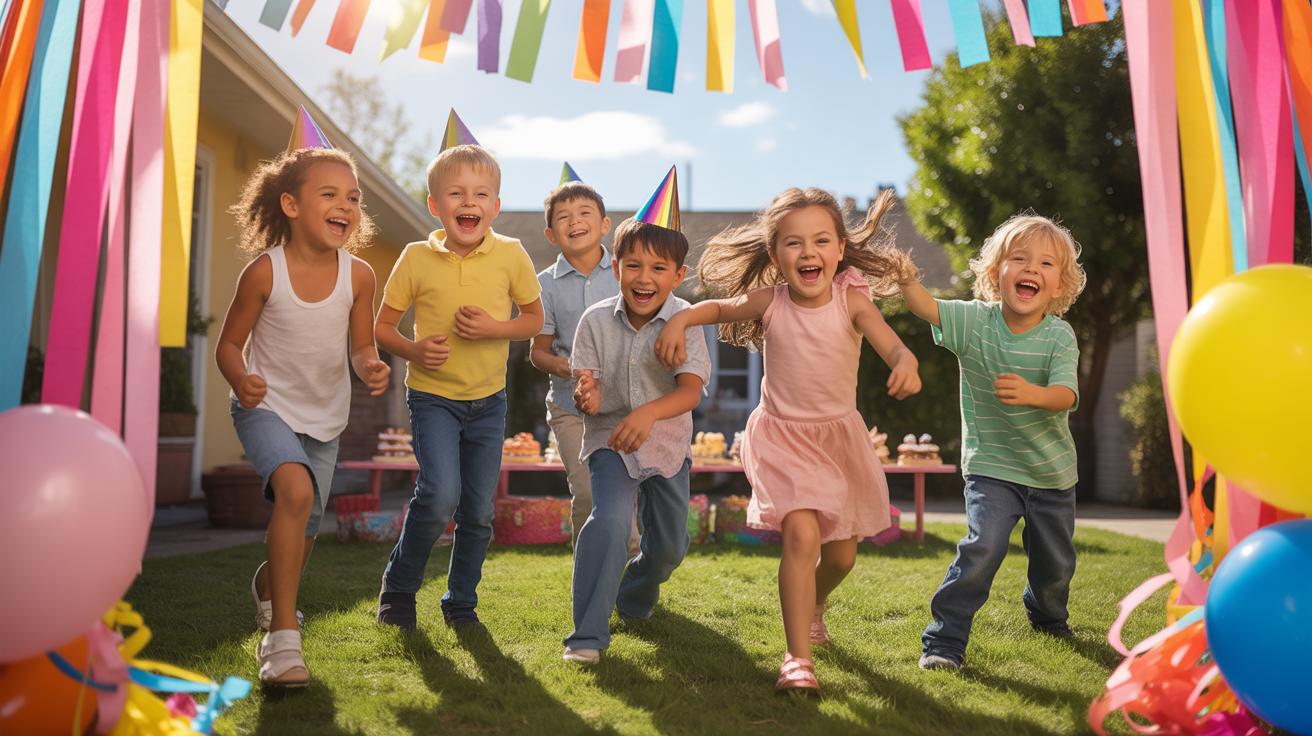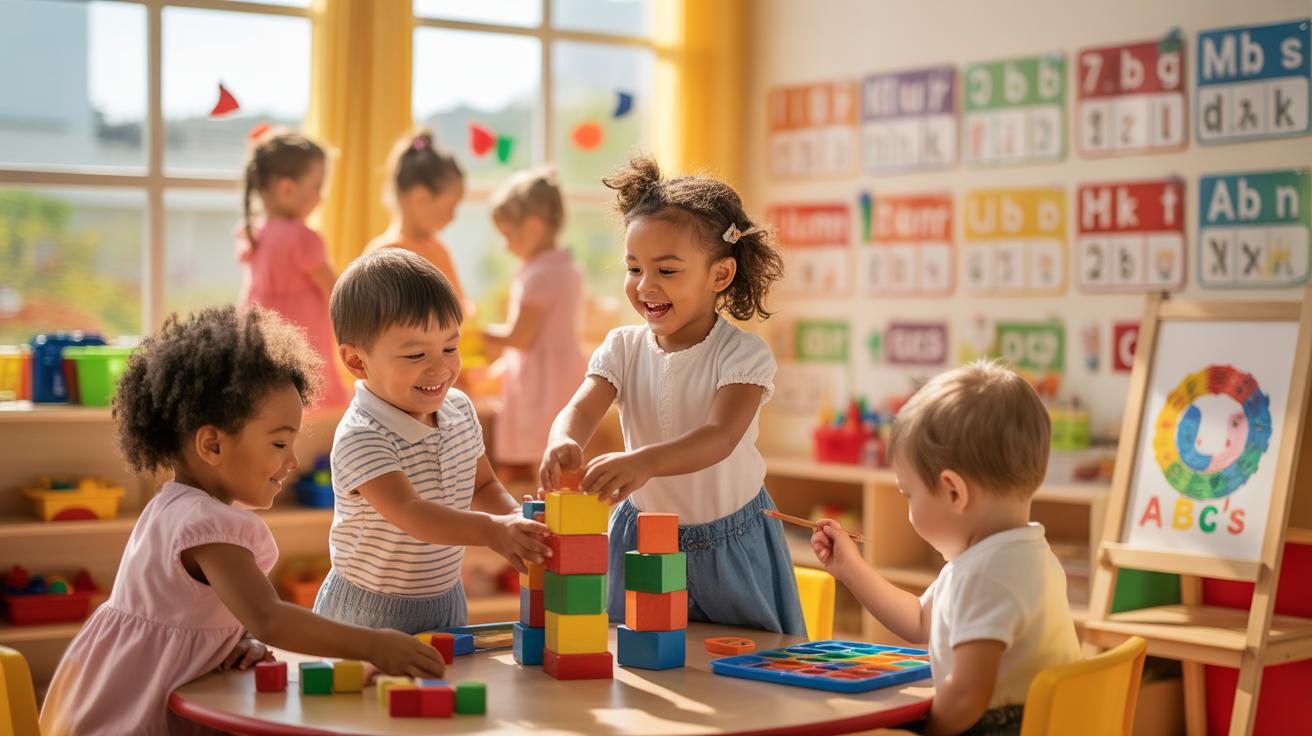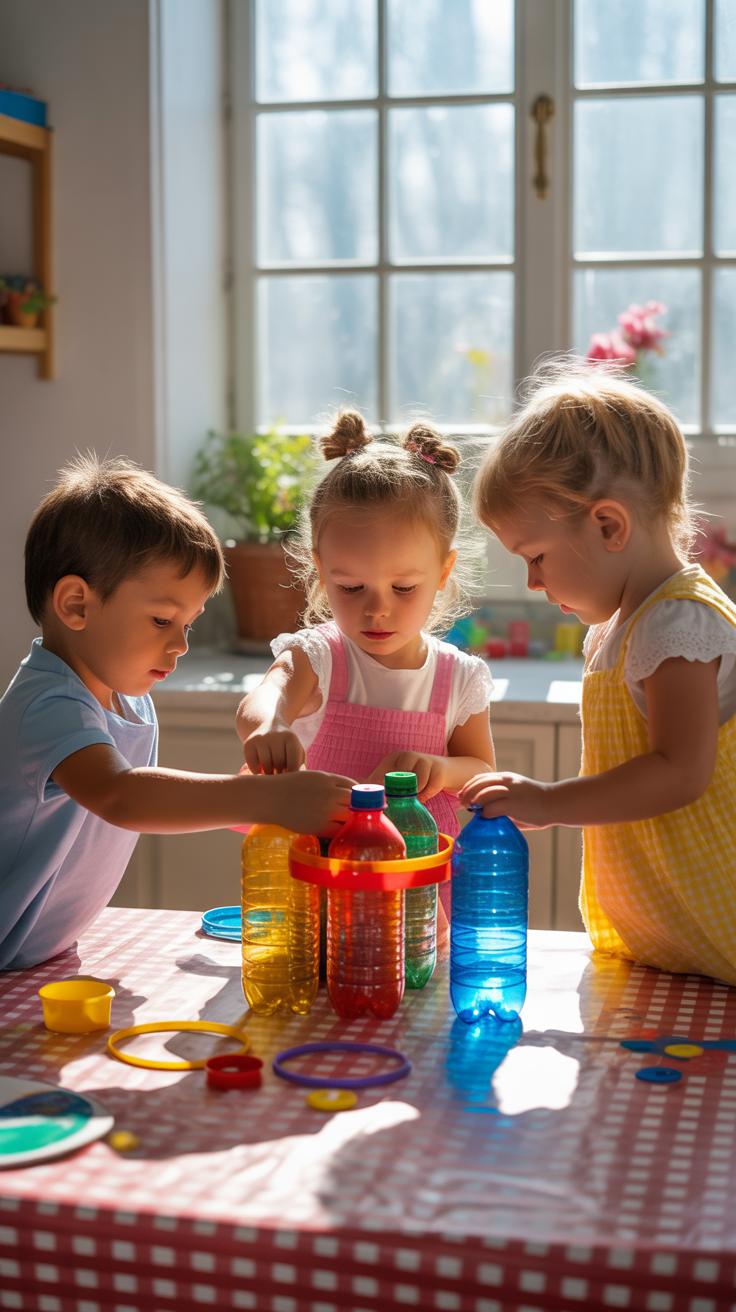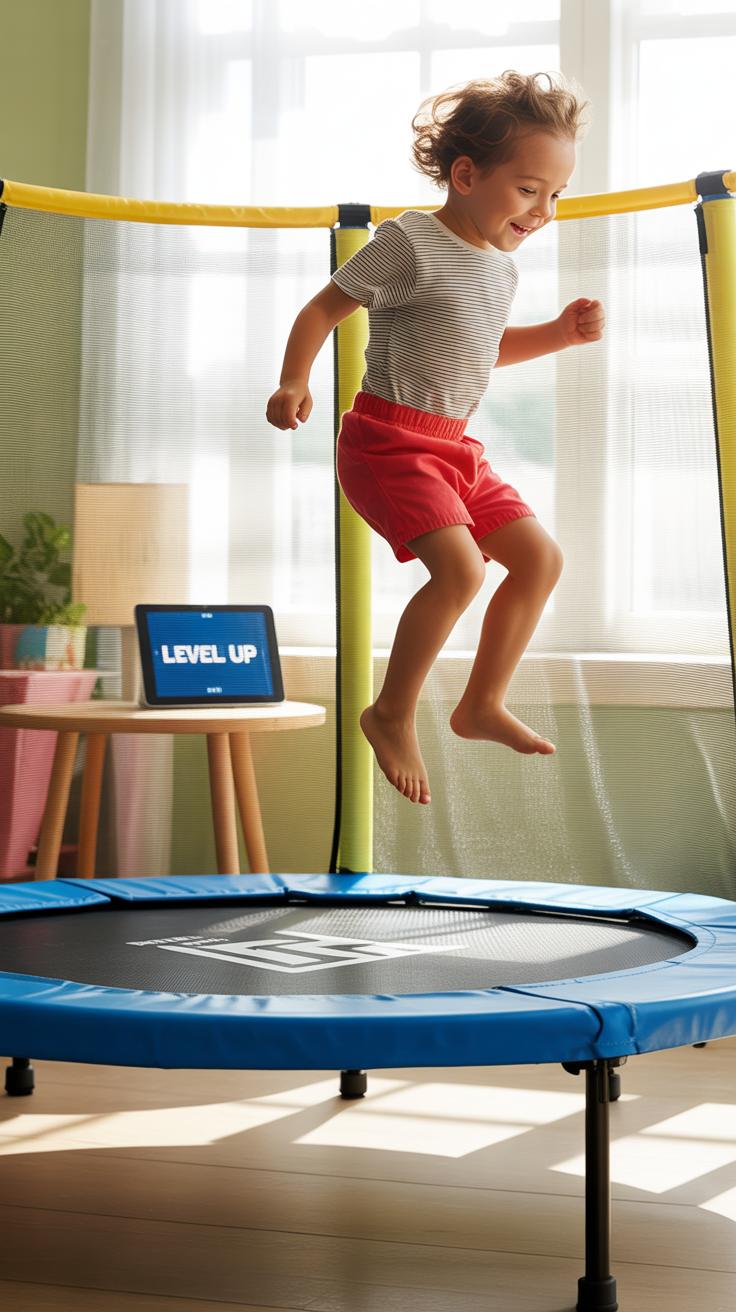Introduction
When the weather keeps children indoors, finding ways to keep them active and entertained can be a challenge. Rainy Day Indoor Games For Kids To Keep Them Entertained All Afternoon offers a variety of fun, easy-to-set-up games that children of all ages can enjoy inside the home. These activities encourage play, learning, and creativity without the need to step outside.
This article explores a range of games from energetic movement activities to quiet, thoughtful games that stimulate the brain. You will discover practical ideas and tips to engage your child meaningfully during those long rainy afternoons, helping you turn gloomy weather into a chance for memorable play.
Simple Active Games To Move Around Indoors
Keeping kids active indoors when the weather is gloomy can feel tricky, but it doesn’t have to be complicated. Simple games that get children jumping, moving, and even balancing can turn a dull afternoon into quite the workout—without needing a lot of space or special equipment.
Setting Up An Indoor Obstacle Course
Try arranging pillows, chairs, and toys to build a fun obstacle course right in your living room. Start by lining up a few pillows for hopping or stepping stones. Then, place chairs so the kids can crawl under or weave around them. Adding soft toys to toss into a basket or balance on their heads spices things up.
Follow these steps:
- Clear a safe space to avoid sharp corners or breakables.
- Arrange pillows in a path for hopping or balancing.
- Set chairs spaced apart for crawling or zigzagging.
- Use toys as markers for tasks like tossing or balancing.
- Give clear rules so it stays fun but safe.
You’ll notice how kids invent their own challenges, sometimes making it just a bit too tricky. That’s where you step in to balance safety and fun. It’s a little like watching a mini-adventure unfold in your home, which is oddly satisfying—and tiring for them!
Fun Dance Games To Burn Energy
Dance games are a great way to shake off excess energy. Musical statues, where kids dance until the music stops and must freeze, can spark lots of laughter and unexpected poses. Freeze dance works similarly, but you only stop when someone moves—kind of a test of self-control wrapped in silly fun.
What’s nice about these games is they don’t need much prep. Just pick some tunes and let the music guide movement. Sometimes, you’ll catch kids adding their own twists, like silly dance moves or teaming up—kind of unpredictable, but that’s part of the charm.
Could something as simple as moving to music really compete with outdoor play? Maybe not always, but it sure helps burn off that restless energy on a rainy day, and the smiles say it all.
Creative Indoor Games To Develop Imagination
Children’s minds are endlessly curious, and rainy days can be the perfect chance to dive into imaginative play. Games that spark creativity not only keep kids busy but also help develop their thinking and language skills. Role playing is a great start—kids can pretend to be anything, from shopkeepers to astronauts, using just what’s around the house.
Role Playing Games With Everyday Items
Surprisingly, items you see daily can become magic props in children’s games. A wooden spoon can turn into a microphone for a concert, or an old scarf might become a superhero’s cape. This kind of play encourages kids to invent stories and characters, stretching their creative muscles. It’s fun to see how a simple box can become a spaceship or a castle. Sometimes, it’s the most unexpected objects that inspire the best ideas. Plus, playing this way helps with language development, as kids describe their characters and actions. You might be surprised how imaginative they get when encouraged to use what’s close by.
Storytelling Games For Imaginative Thinking
Interactive storytelling can be a really fun group activity or a quiet solo time. One simple game is to start a story and take turns adding sentences, building a unique narrative together. This challenges kids to think quickly and use new vocabulary. Another idea is creating story cards with pictures or words that guide the tale in different directions. It’s a playful way to practice communication and cooperation. Sometimes stories get funny or a bit strange—but that’s part of the charm. Encouraging children to invent and share their own tales boosts confidence and social connection in ways that watching TV rarely does. Maybe you’ll find your child’s wild stories more entertaining than your own!
Board Games To Encourage Strategic Thinking
Discuss the benefits of classic board games for kids
Board games have a curious way of grabbing kids’ attention while slipping in some valuable skills. When you let children sit down to play a classic board game, they get more than just entertainment. They start practicing planning moves ahead, weighing options, and adjusting strategies based on how the game unfolds. It’s like a low-key brain workout that feels like play. Beyond strategy, they learn patience, turn-taking, and sometimes even coping with losing—it’s a whole package of lessons hidden in simple fun.
One thing I’ve noticed is that kids often surprise themselves with how quickly they get better at thinking strategically if they stick with a game for a while. But, you can’t just throw any game at them and expect this to happen. The right board game needs to match their age and how they think right now.
Choosing The Right Board Game For Your Child
Picking the perfect board game isn’t always straightforward. You want something challenging but not frustrating, engaging but not too complex. Think about your child’s age first—games with lots of rules or long play sessions might not hold a younger child’s focus. Then, consider what captures their interest. Do they like numbers or stories? Animals or adventures? Their preferences often hint at which games might stick.
Skill level matters a lot here. A game that’s too easy ends quickly and leaves boredom; too hard, and frustration sets in. Sometimes, children grow into games—start simple and gradually introduce more complex ones. And don’t hesitate to mix in cooperative board games where kids work together. Those promote teamwork while still encouraging strategic thinking.
Popular Indoor Board Games And Their Benefits
Some classics come up often because they seem to strike the right balance of fun and learning. For younger kids, games like “Ticket to Ride: First Journey” subtly teach geography and planning. “Santorini” combines simple rules with deep strategy, maybe better for slightly older kids who enjoy tactical thinking. “Carcassonne” is another solid pick—placing tiles to build landscapes develops spatial awareness and cause-effect reasoning.
“Chess” tends to be the go-to for brain exercise but might feel intimidating at first. Still, introducing it slowly can sharpen problem-solving and long-term planning skills over time. Meanwhile, games like “Guess Who?” foster deduction and memory, though they rely less on complex strategy.
Trying different games during a rainy day indoors can keep things fresh and entertaining. Sometimes, kids just love the social interaction almost as much as the game itself. And really, isn’t that part of the fun? It’s not just about winning or losing but figuring things out together.
Card Games That Are Easy And Entertaining
Simple card games can keep kids occupied for hours, and they do more than just fill the time. These games often sharpen memory and introduce basic strategic thinking—skills that sneak in while kids are busy having fun. It’s interesting how a deck of cards, something pretty small and simple, offers such a variety of challenges. Sometimes, I find that kids enjoy the unpredictability as much as the strategy, which makes the games feel fresh every time you play.
Classic card games like Go Fish, Crazy Eights, and Snap can be perfect starting points. For younger players, you might want to tweak the rules a bit—maybe by simplifying the instructions or limiting the number of cards each player holds. For example, in Go Fish, instead of asking for any card, kids could be told to only ask for colors or numbers, which eases the memory load but still keeps the game lively.
Playing cards as a family opens up a chance for shared laughter and friendly competition. Games like Uno, a bit more structured but still approachable, let everyone join in, regardless of age. These moments often feel less like playing a game and more like spending meaningful time together. Sometimes I think it’s less about the card game’s rules and more about the stories or jokes shared around the table.
Classic Card Games For Kids
- Go Fish: Players ask each other for cards to make pairs; easy to follow and builds memory.
- Crazy Eights: Match the top card by number or suit, and the first to get rid of all cards wins.
- Snap: Players race to call out “Snap!” when two matching cards appear—fast and fun.
Card Games To Play With Family
- Uno: Players match colors or numbers aiming to be the first to empty their hand; good for all ages.
- Old Maid: A game about avoiding the single unmatched card, perfect for giggles and simple strategy.
- Rummy Jr.: A simplified version where players make sets or runs, encouraging planning together.
Quiet Games That Promote Focus And Patience
Sometimes, kids need a break from the usual noisy play. Quiet games can provide that calm space where they practice sitting still, focusing, and building patience. Think about simple activities like sorting beads by color or threading buttons onto a string. These might seem small, but they require kids to keep their attention steady and hands steady—which isn’t always easy for little ones.
Games involving fine motor skills, such as balancing small objects or folding origami, can also help develop concentration. I’ve noticed that when my niece tries to stack tiny blocks without knocking them over, she really zones in, even if it takes a few tries. These moments teach kids to keep trying without rushing, which is a useful skill beyond playtime.
Introducing these quieter games on a rainy day can be a welcome pause. They’re not about winning but about noticing small successes and feeling proud for sticking with something. Perhaps, quietly focused play will surprise you by becoming a favorite, even when the sun is shining again.
Puzzle Games For Brain Exercise
Puzzles seem simple, but they do a lot more for kids than just pass the time. Completing a puzzle requires looking closely at shapes and colors, making it a good brain workout. It pushes children to think critically and figure out how pieces fit together—sometimes you have to test, fail, and try again.
Besides improving problem-solving skills, puzzles demand attention to detail and patience. You might be surprised how long a child can stay absorbed trying to find the right corner piece. Puzzles also teach persistence; missing pieces or difficult sections encourage kids to keep going rather than give up immediately.
Plus, puzzles come in many levels—from simple four-piece puzzles for toddlers to complex ones for older kids, which means you can adjust the challenge based on your child’s age. I found that when my son worked on a 100-piece puzzle, it quietly motivated him to slow down and focus, which wasn’t always his thing before.
Building Block Games To Improve Coordination
Building blocks, like LEGO or wooden bricks, provide more than just fun stacking. They demand hand-eye coordination as kids grasp, position, and place pieces carefully. With each block added, kids plan and visualize the structure they want to create—so creativity is practically built-in.
Many times, I’ve seen children who struggle with fine motor tasks gain confidence by playing with blocks, simply because the play feels natural and rewarding. Building isn’t always about following instructions; it’s about experimenting and seeing what stands or falls, which also teaches trial and error.
The process can be slow, and sometimes a tower wobbles or collapses. But that’s part of the fun—figuring out balance and structure quiets the mind and improves precision. If you haven’t tried, maybe give your kids a pile of blocks and watch how they surprise themselves with what they can create. It’s hands-on learning without even feeling like learning at all.
Interactive Group Games To Encourage Teamwork
When kids play together, the chance for teamwork and social learning pops up naturally—if the game is right. Group games that require cooperation not only make the time fly but also nudge children toward better communication and conflict resolution. Have you ever seen a group of kids trying to untangle themselves from a human knot? It’s a simple game but watching them figure it out—sometimes with giggles, sometimes with frustration—is quite the eye-opener.
Other games like “Pass the Story,” where each child adds a sentence to a shared tale, encourage listening and creativity while making sure everyone gets a chance to contribute. These moments of joint effort mean they practice patience and develop empathy without even realizing it. It’s teamwork that feels more like fun than work.
Collaborative Games To Build Social Skills
Games designed for shared goals tend to highlight kids’ ability to understand each other’s feelings. Consider “The Floor is Lava” but modified: instead of racing individually, children have to help each other cross using limited stepping stones. This game enhances communication and problem-solving, but also encourages empathy—kids understand when to wait, when to step in, or when to cheer a friend on.
Another good one is a puzzle assembled together; the challenge isn’t just finishing it quickly, but making sure everyone feels involved and valued. You might notice arguments popping up, which isn’t always bad—it’s part of learning compromise and seeing others’ perspectives. Sometimes it’s messy, sure, but those little struggles often lead to real growth.
Simple Indoor Sports Adapted For Small Spaces
Not every indoor game needs expansive play areas. Small rooms or living rooms can become arenas for gentle, space-friendly sports that still focus on fair play and fun. Modified balloon volleyball is a classic—light balloons float slowly, giving kids time to react and work as a team without the risk of broken items.
Or try “Mini Bowling” down a hallway using soft balls and plastic bottles. It’s less about competition and more about joy in playing together safely. Even a simple relay race around chairs boosts energy and can get everyone moving without needing a gym.
These games emphasize fun over winning, which is sometimes easier said than done with energetic kids. But creating a relaxed, encouraging atmosphere makes all the difference, letting them enjoy the moment and each other.
Creative DIY Game Ideas Using Household Materials
Making indoor games from things you already have around the house can be surprisingly fun—and it often turns into a little project itself. There’s something about using simple materials that sparks kids’ creativity and makes playtime feel more personal, maybe even a bit more adventurous. You don’t need fancy supplies, just a bit of imagination and everyday stuff.
Making Your Own Indoor Bowling Alley
Empty plastic or glass bottles make great bowling pins. Just rinse them out, maybe add a little water or some dry rice for weight, and arrange them in a triangle on the floor. A soft ball—like a foam ball or a rolled-up sock—becomes the bowling ball. It’s easy to reset and play over and over. Kids usually love the sound and sight of the pins toppled. It gets surprisingly competitive, too. You can even paint or decorate the bottles beforehand for more personality, turning it into an artsy prep activity as well. Do you think older kids might find this too simple? Maybe, but tweaking the distance or scoring always keeps it interesting. Plus, it encourages focus and coordination, which is always a win indoors.
Crafting Memory Matching Cards
Memory games are classics, but making your own cards adds a twist. Grab some cardboard or thick paper, and cut it into equal squares. Then, let the kids draw pictures, shapes, or even numbers on pairs of them. It’s neat because these designs can be personal—maybe their favorite animals, or silly doodles only they’ll recognize. I’ve seen kids get really invested in remembering “their” cards rather than generic ones. Once made, shuffle and lay them face down for a game testing memory and concentration. Custom cards can be made as simple or detailed as you like, which keeps them fresh after many plays. Ever thought about combining this with stories—like matching characters to scenes? It makes it a bit more challenging, too.
Balancing Screen Time With Active Play Indoors
Using technology with kids on a rainy day can be a useful tool, but it’s tricky to find the right balance. You want your child to get some physical movement or creative time without just staring at a screen all afternoon. Maybe an app sparks their curiosity, but it’s good to follow that up with something hands-on—like turning a drawing app into a real coloring project afterward. It’s a bit like mixing two worlds: digital input, then physical output.
Educational Apps As Part Of Indoor Play
There are several apps that can actually support learning while keeping kids entertained. For example:
- Apps that teach basic math or spelling through games which encourage problem solving.
- Storytelling apps that allow children to create their own stories, promoting creativity on the screen and offline.
- Movement-based games that prompt kids to mimic moves or follow along with dance routines.
These apps can be a nice extension of the activities you already set up, not a replacement. Sometimes, kids will dive deeper into these if they then get to build or craft something related right afterward.
Setting Limits To Encourage Other Games
It’s easy to let screen time stretch longer than intended. One tactic I’ve found helpful is setting a timer. It makes managing expectations clearer for everyone—and kids often respond well when they know there’s a definite end. Plus, you could try pairing screen time with “active breaks,” like a quick stretch, jumping jacks, or a short scavenger hunt around the living room. That little burst of movement helps reset their focus and balances mind and body.
Another idea: create a visible schedule combining tech moments with creative or physical play blocks. Sometimes, the structure itself reminds kids that screen time is just one part of their day—not the whole thing.
It’s a bit of a juggling act, and honestly, some days it’s easier than others. But if you mix tech with tangible activities and clear limits, kids are more likely to stay engaged without becoming overly dependent on screens.
Conclusions
Indoor games offer a wealth of opportunities to keep children active, engaged, and learning even when outdoor play isn’t an option. Your child can enjoy a healthy balance of physical movement and imaginative play through simple games that require little preparation and use items readily found at home.
By trying the games and activities discussed in this article, you will find that rainy days become an opportunity for your child to discover new interests, develop skills, and have fun without feeling cooped up. You have the tools to transform any indoor day into an enjoyable adventure for your child.

